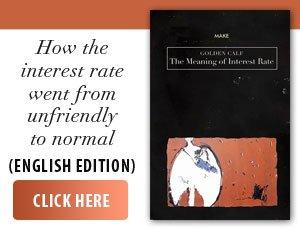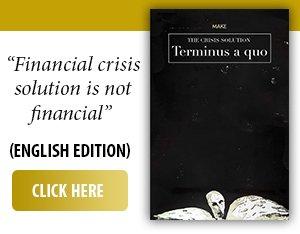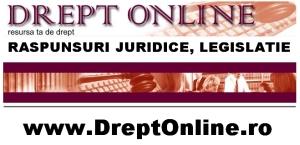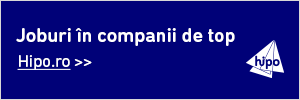The European currency recorded its first monthly depreciation against the dollar this year in July, but in the first seven months of 2025 the euro appreciated by 11.9% against the US currency, the best performance in the last eight years.
The trend was fueled by a combination of factors, including fiscal stimulus in Europe, reduced confidence in the United States' monetary policy and the accumulation of speculative short positions (in which they bet on depreciation) on the dollar, which is boosting the euro's rise, according to an article published by Euro News at the end of June.
According to the aforementioned source, Germany adopted a major tax reform that supported the appreciation of the euro, despite the interest rate cuts by the European Central Bank. The Bundestag exempted spending on armaments and infrastructure from the restrictions imposed by the public debt law, creating a euro500 billion fund for green energy, digitalization and regional development. In addition, Germany and many other European countries will increase defense spending, supporting NATO goals and the ReArm Europe program. On the other hand, in the United States, markets focused on President Donald Trump's unpredictable trade policy, which has led to withdrawals from American assets, as well as on the pressure on Federal Reserve Chairman Jerome Powell, which is questioning the independence of the Fed.
The EUR/USD pair reached a high of 1.1831 in early July (i.e. one euro was quoted at 1.1831 US dollars), the highest level since November 2021. Recently, however, the quote suffered a sharp depreciation, in the context of Donald Trump's conclusion of a trade agreement with the European Union, which provides for import tariffs of 15% on most goods exported from the EU to the United States, as well as investments of $600 billion from the Union in the American economy. Previously, the United States had signed a trade agreement with Japan.
Marc Chandler, chief market strategist at Bannockburn Global Forex, said, quoted by Reuters: "The market breathed a sigh of relief, as the tariffs - at least the announced plan with Japan and the EU, as well as the possible extension of the agreement with China by 90 days - helped to remove the extreme risk of depreciation (of the dollar)”.
The agreements concluded by the United States with the European Union and other trading partners have reduced fears of a major slowdown in the American economy. In contrast, the tariffs imposed by Washington are expected to have a negative impact on the European economy.
In this context, investors are wondering whether the euro's depreciation last month against the dollar marks the beginning of a trend change or just a temporary correction of the European single currency's previous appreciation, according to an article published by Reuters at the end of last month.
• JP Morgan sees EUR/USD at 1.19 by September 2025, rising to 1.22 by March 2026
JP Morgan Global Research had a bearish outlook for the euro for most of 2024, but that changed this spring.
"Germany's recently passed federal budget signals a more expansionary fiscal stance than previously anticipated, which is likely to support economic growth. The European Central Bank has suggested that it is nearing the end - or at least a pause - of its easing cycle. While this is not a prerequisite for a positive outlook on the euro, it is nevertheless a positive factor for the currency,” Meera Chandan, deputy head of global currency strategies at JP Morgan, wrote in a note published late last month.
The strategist attributes the EUR/USD's July high to the outlook for the interest rate differential between the United States and the eurozone, as well as the relative performance of equity markets.
The European Central Bank has cut interest rates four times this year, to a rate of 2%, but President Christine Lagarde has suggested the cycle is nearing its end. In contrast, the United States Federal Reserve has kept its target rate at 4.25% to 4.5%, but analysts expect the US central bank to cut rates one to two times this year, with Goldman Sachs predicting as many as three cuts.
"According to most estimates, the fair value (of the EUR/USD ratio) is around 1.11-1.12, but we do not believe that this will limit the strengthening of the EUR/USD pair in the medium term. In the worst case, we expect a consolidation phase, followed by a resumption of the upward trend,” Chandan added. Overall, JP Morgan Global Research expects the EUR/USD pair to reach 1.19 by September 2025 and rise to 1.22 by March 2026.
"While currency markets may be in a short-term respite following recent significant moves, we expect long-term factors - such as the cooling US economy, rebalancing of currency hedging positions, German fiscal support and changes in US economic policy - to remain the main drivers of EUR/USD appreciation over the medium term,” Chandan added.
• Danske Bank: Weakening confidence in US institutions likely to continue to support EUR/USD appreciation
Danske Bank, Denmark's largest bank, expects the EUR/USD exchange rate to strengthen to 1.23 over the next 12 months, on the back of capital inflows into the eurozone and a weaker dollar, according to an article published late last month by Exchange Rates UK.
The bank's team believes that volatility could arise in the short term, but adds: "We continue to believe that the currency pair has an upward trend, supported by interest rate differentials, the recovery in European asset markets and the reduced need for tighter monetary policies globally.
”Weakening confidence in US institutions is also likely to continue to support EUR/USD appreciation, the bank's analysts believe. A key element in this regard is the Federal Reserve's policy, in the context of persistent criticism from Donald Trump and his administration. For the time being, the US president seems to have given up on the idea of immediately dismissing Jerome Powell, but expectations are that Trump will try to tip the balance in his favor within the Fed's governing board, Exchange Rates UK also writes.
• ING: The vast majority of analysts, including us, believe this is just a correction in a basic uptrend in the euro/dollar pair
Russell Matthews, portfolio manager at RBC BlueBay Asset Management, says the new information on trade deals has not changed his view on European growth, writes Reuters.
"The new narrative, according to which the United States has obtained a better deal, has somewhat diminished the potential for appreciation (of the euro) generated by developments in Europe over the past three to six months, but this has not fundamentally changed the dynamics,” he said.
His opinion is shared by Chris Turner, head of global markets at ING. "The vast majority of analysts, including us, believe this is just a correction in a basic uptrend in the euro/dollar pair,” he said.
Goldman Sachs analysts, led by Isabella Rosenberg, expect the next stage of dollar weakness to come from monetary policy rather than trade uncertainty. "Recent trade deal announcements and limited evidence of tariff pass-through have reduced inflation uncertainty and put downward pressure on volatility,” they wrote in a note to clients, according to Reuters.
• Berenberg: Substantial German fiscal stimulus will support eurozone growth prospects
German bank Berenberg expects the EUR/USD pair to enter a consolidation phase in the short term, but in the longer term, US administration policies will contribute to the weakening of the dollar, according to Exchange Rates UK.
Berenberg estimates a strengthening of the exchange rate to 1.22 by the end of 2026, while a possible fiscal crisis in the United States could lead, at least temporarily, to the 1.30 threshold being exceeded.
The bank's team is pessimistic about US economic fundamentals, believing that trade policies, the deteriorating fiscal outlook and the erosion of trust in institutions will undermine investor confidence. Also, threats to the independence of the Federal Reserve will make the US less attractive, a situation that may worsen. On the other hand, Berenberg believes that the substantial fiscal stimulus in Germany will support the eurozone's growth prospects.
The bank believes that the fair value for the EUR/USD exchange rate is already around 1.30 and, in the long term, the improvement in the eurozone's economic performance will gradually lead to an increase in this estimate, according to Exchange Rates UK.
Berenberg analysts expect the fiscal deterioration in the United States to be a fundamental factor that will undermine the strength of the dollar, with the 1.50 target for the EUR/USD pair being realistic in the long term.
Berenberg points out that the US has been running budget deficits every year since the 1960s, but in recent years there has been a significant change in trend, with significant deficits even during periods of solid economic growth. Based on the latest budget draft, the bank estimates that the United States will record a deficit of more than 7% of GDP in the next fiscal year, and if the American economy were to enter a recession, the consequences would be even more serious.
• HSBC: EUR/USD has benefited from US weakness, but what has taken the rate to this point will not be enough to take it further
Not all banks see a significant appreciation in the EUR/USD pair. HSBC expects the exchange rate to remain capped at 1.20, with the possibility that the negative sentiment towards the dollar is excessive, according to an article published late last month by Currency News.
"The story around the dollar has been negative, while certain factors that should have supported the currency have not had an effect. There are features of a "bubble', which may indicate that a bottom for the dollar may be near,” according to the bank's analysts.
In their opinion, the EUR/USD pair is well above the level suggested by the interest rate differential. "If the pair's rally is to continue, we believe it will need to be supported by a clear improvement in the economic fundamentals in the eurozone. While there are some positive signs, we believe more is needed to produce a meaningful change. EUR/USD has benefited from US weakness, but what has taken the pair to this point will not be enough to take it further," according to the HSBC team.
• Wells Fargo sees dollar rebound in 2026, EUR/USD to 1.12 by year-end
Wells Fargo sees limited downside risk for the dollar for the rest of 2025, with EUR/USD at 1.18 by year-end. The bank also sees a dollar rebound in 2026, with EUR/USD falling to 1.12 by year-end, according to Exchange Rates UK.
The bank expects the US economy and monetary policy to be the main drivers of prices in the coming months. It also expects weaker US economic growth to lead to three rate cuts by the Federal Reserve in 2025, keeping the dollar on the defensive. But Wells Fargo expects the economy to recover next year, and the Federal Reserve will not cut interest rates again in 2026, which will be a key factor supporting the US currency.
Yesterday, at around 11:30 AM in our country, the EUR/USD quote was at 1.154, according to data displayed by the Investing.com website.



















































